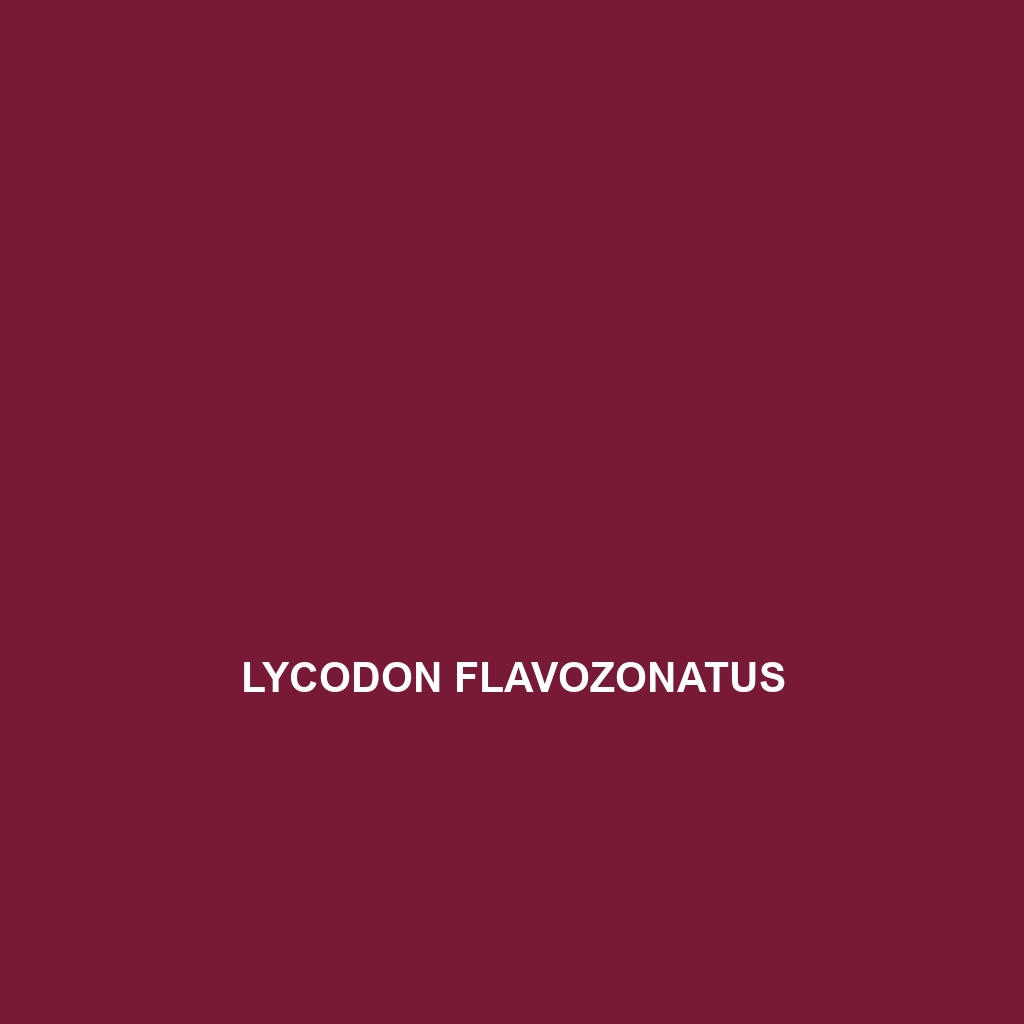Common Name
Lycodon flavozonatus
Scientific Name
Lycodon flavozonatus
Habitat
Lycodon flavozonatus, commonly known as the yellow-striped wolf snake, predominantly inhabits tropical and subtropical regions, particularly in Southeast Asia. This species thrives in a variety of habitats, including rainforests, savannas, and some temperate forests. The snake is often found near water sources, which may include streams, rivers, and marshes. The humid climate and the presence of dense vegetation provide ideal conditions for the snake to camouflage and hunt its prey. Its adaptability to both lowland and montane environments underscores its resilience and ecological versatility.
Physical Characteristics
The physical appearance of Lycodon flavozonatus is distinct and captivating. Adult snakes typically measure between 1 to 1.5 meters in length, displaying a slender and elongated body shape. The most striking feature is its vibrant coloration; the species features bold yellow or cream-colored stripes that run longitudinally along its dark brown or black background. These markings serve not only as camouflage in leafy environments but also as a warning signal to potential predators. Its head is slightly broader than its neck, with large, prominent eyes that provide excellent vision during its crepuscular hunting periods.
Behavior
Lycodon flavozonatus exhibits a fascinating array of behaviors. Primarily an nocturnal species, it is most active during twilight and nighttime hours when it hunts and forages for food. The snake utilizes both arboreal and terrestrial habitats, often climbing trees or remaining concealed within the underbrush. Mating rituals typically occur during the rainy seasons, where males engage in competitive displays to attract females. Additionally, strike and retreat strategies showcase its unique hunting methods, as it preys on small mammals, lizards, and amphibians, demonstrating agility and precision.
Diet
Lycodon flavozonatus is primarily a carnivore and exhibits a preference for small vertebrates. Its diet mainly consists of various species such as geckos, frogs, and small rodents. The snake employs a constriction method to subdue its prey, wrapping its body around it before swallowing it whole. This feeding pattern often occurs in the cover of darkness, allowing the snake to take advantage of its nocturnal nature. Its role as a predator is crucial in maintaining the balance within its ecosystem by controlling the populations of its prey.
Reproduction
The reproductive cycle of Lycodon flavozonatus is characterized by a unique mating season that coincides with the tropical monsoon season. Mating typically occurs from late spring to early summer. After a gestation period of approximately 45 to 60 days, females lay clutches of 6 to 12 eggs in hidden, humid locations to maintain optimal conditions for incubation. The hatchlings emerge after about two months, possessing a smaller yet similar appearance to adults. Maternal care is minimal; however, protection of the nesting sites ensures some level of safety for the young snakes.
Conservation Status
As of the latest assessments, the conservation status of Lycodon flavozonatus is categorized as Least Concern on the IUCN Red List. Despite its relatively stable populations, habitat destruction due to deforestation and agricultural conversion poses a potential threat. Conservation efforts emphasize habitat preservation and the importance of maintaining biodiversity in Southeast Asian rainforests. Environmental organizations are actively engaging communities to reduce the impact on the natural habitats of this remarkable species.
Interesting Facts
One intriguing fact about Lycodon flavozonatus is its ability to mimic the behavior of other venomous snakes to deter potential predators. Additionally, some individuals have been observed exhibiting a unique hunting technique where they combine both ambush tactics and active hunting, showcasing their adaptability in different hunting scenarios. These fascinating adaptations enhance their survival in diverse environments.
Role in Ecosystem
Lycodon flavozonatus plays a vital role in maintaining the ecological balance of its habitat. As a predator, it helps regulate populations of insects and small vertebrates, which, in turn, promotes healthy vegetation growth and ecosystem dynamics. The snake’s presence signifies a healthy environment, as it is sensitive to ecological changes. Moreover, it contributes to soil health through its predation habits, ensuring the continuous cycle of life in its ecosystem. The sustainability of habitats where it resides is crucial not just for this species but for the entire biodiversity surrounding it.
